What It Was Like To Eat At The Original Chili's
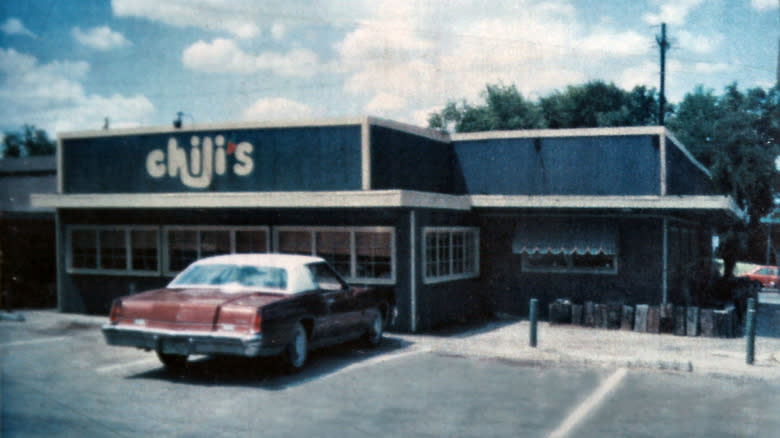
With over 1,600 restaurants, spread out across 27 countries, Chili's has remained a reliable destination for those seeking a quality burger, sizzling fajitas, a shaken margarita, or a basket of chicken crispers. Before it became such a lunch and dinner staple, though, Chili's actually sprouted from very humble beginnings. It opened its doors for the first time, in the outskirts of Dallas, Texas, on March 13, 1975. The very first Chili's looked and operated a little differently to the ones of today, but the fun spirit and delicious food legacy certainly carry on. Ever wonder what it was like to eat at the very first Chili's? The Daily Meal set out to paint that picture, conjuring up a certain place and time when casual dining was a concept in its infancy, and Chili's #1 was leading the way, with lines around the block.
To complete this picture, we took a trip down memory lane. This included stopping by Chili's current Dallas headquarters at Brinker International, as well as interviewing the man who started it all — founder Larry Lavine. A global franchise was never his initial intention with Chili's, as he mentioned, "We just wanted to make a living, and have a little neighborhood restaurant." Let's pull up a chair in that neighborhood restaurant, shall we?
Read more: The Ultimate Ranking Of American Fast Food Restaurants
The Name Chili's Was Cooked Up From A Chili Contest

Larry Lavine's career started with running a music venue called the Studio Club, where the likes of Chuck Berry and ZZ Top graced the stage. He next took ownership of the famed local restaurant LouAnn's, until it burned down. Lavine and partner Malloy Buckner built a new restaurant where LouAnn's once stood — Kitty Hawk, which featured char-broiled shrimp and a replica of the Wright brothers namesake plane. With Kitty Hawk taking flight, Lavine's interests grew more towards another venture. He sold his stake in the restaurant and concentrated his efforts on what would become Chili's.
Lavine had grown up eating chili cheeseburgers at Burger House and Goff's Hamburgers, and those memories stayed with him when he got into the restaurant business. His father-in-law was renowned racecar driver and designer Carroll Shelby, who had a special place in his heart for chili. Shelby created the world's first Championship Chili Cook-off in 1967, which is still held to this day in Terlingua, Texas. Lavine, naturally, was present at these cook-offs, even acting as a judge and noting the attendees' excitement. As he mentioned, "In Texas, there's two things people will talk about if they eat — barbecue and chili." They picked the name Chili's for their new restaurant as it was short and catchy, and hopefully would get a lot of press from it. They didn't expect to sell a lot of actual chili, but did, and so much more too.
The First Location Of Chili's Has A Storied Past
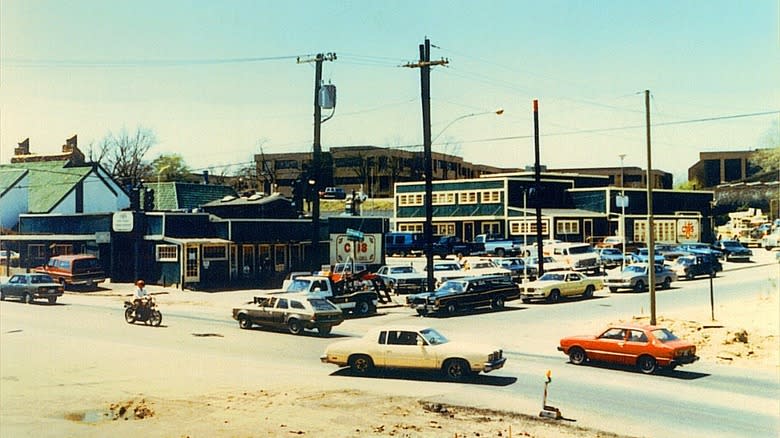
It's been rumored that the original location of Chili's led a former life as a stagecoach stop, a depot for the Texas Electric Railway, or (most commonly believed) a post office. Lavine had actually originally wanted this location, at the corner of Greenville Avenue and Meadow Road in the Lake Highlands area of northeast Dallas, for his previous restaurant venture, but it was unavailable at the time. Eventually it was, though, and Lavine leased the bar building owned by local liquor magnate Red Coleman.
Lavine explained, "At the time, we were kind of on the edge of where the active restaurant patrons attended. It had 25,000 cars a day. And I felt like that was enough. And turned out it was enough." He wasn't alone in his thoughts on the location, as diners also had nearby options to consider such as the Captain Cook Seafood Grotto, Henry's House of Beef, or the tiki bar Don the Beachcomber.
The Design Of Original Chili's Was Very Funky And Warm
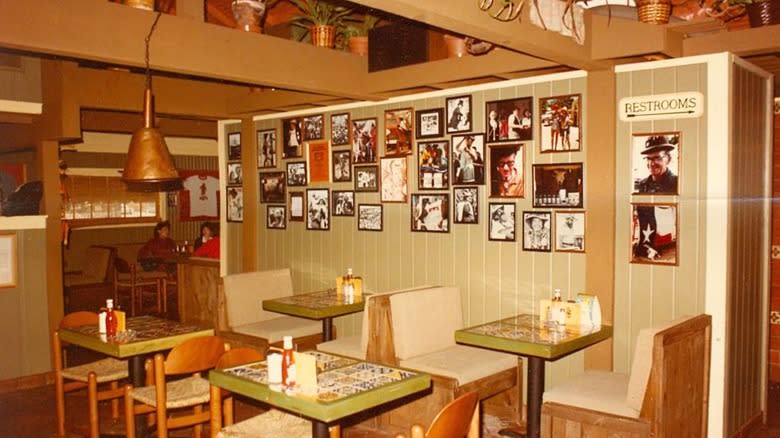
The vacant structure that eventually became the very first Chili's was a windowless bar with four black walls. Architect Grant Saint-Claire and future Interior Design Hall of Famer Trisha Wilson had worked with Lavine on his previous restaurant Kitty Hawk, and were tasked with turning Chili's into an inviting place to come to. The new project's budget initially went over, forcing Lavine to sell his own car to get it to the finish line.
Wilson was a graduate of the University of Texas in Austin, and she borrowed the school's classic burnt orange for the color of the ceiling, to pair with the soft green that shaped the rest of its interior. Booths were made from old shipping crates, and the tables had Majolica-tiled tables. The walls were lined with hundreds of pictures and posters of chili cookoffs, and every book about chili they could get their hands on. There was also greenery, and a free jukebox on hand, adding to Chili's liveliness. Lavine commented that the overall design had a "very funky, warm, very casual atmosphere."
As Chili's quickly grew in popularity, so did the lines to get in, as they didn't take reservations. Patrons would be served alcohol while waiting for one of the 50 or so tables before, eventually, an actual bar was built inside Chili's. The restaurant was open daily from 11 a.m. until midnight, and stayed open until 2 a.m. on Fridays and Saturdays.
The Original Chili's Logo Was Suppose To Feature A Chili Pot

Lavine's high school friend Grant Saint-Claire was not only involved in the design of the first Chili's, but he also created the restaurant's very first hand-drawn logo. Lavine's original idea was to have the word Chili's sitting within the image of a chili pot, but Saint-Grant couldn't figure out how to make it work. Saint-Claire wasn't a fan of the idea to begin with, telling Lavine "this thing will look like a spittoon." However, the two did agree on the idea of using a chili pot as a lampshade that hung over the restaurant's tables.
Saint-Claire admitted the idea of using the now ubiquitous chili pepper in the logo came out of nowhere, and he utilized it in the perfect place — as the apostrophe in Chili's. His version also had the "h" and first "i" connected. This logo was painted onto the side wall of Chili's and, borrowing the idea from Shell gas stations, it also hung from a sign atop a pole to lure in drivers. Saint-Claire also created a mailbox in the shape of a chili for the restaurant's business office.
The next, more familiar, iteration of the logo connected the "h" and the "l" in a fun, curvy u-shape that houses the first "i." The logo has since seen slight variations over time, but still retains a look that harkens back to the very original that Grant Saint-Claire dreamed up.
Let's Play Restaurant Is Still The Chili's Mantra To This Day

The early success of Chili's was down to the team of "hamburger hippies" Lavine had assembled. One key figure was Kenny Dennis, who was known as "the heart and soul of Chili's in the early days." He could solve any issue, which earned him the nickname "Kenny-can." He also created the fun mantra that the company still adheres to this day: "Let's play restaurant." Playing restaurant included having the servers design their own blue denim work shirts with homemade designs, wearing shirts that broke down each ingredient of its beloved burgers, and customer parking signs that warned "other cars will be crushed and melted."
Employees loved working at the restaurant, and they referred to themselves then and today as Chili Heads. On a visit to Chili's HQ in Dallas, Chief Executive Officer and President of Brinker International, Inc., Kevin Hochman pointed out, "a lot of the executives that run around here, they actually started as hourly employees and they worked their way up." Dennis would later head up another Brinker International chain, the On The Border Mexican Grill and Cantina. His roommate and friend Doug Brooks became the manager of the original location in 1978, and in 2004, he became the 4th CEO in the company's history.
Chili's Original Customers Included Thieves And Horseback Riders
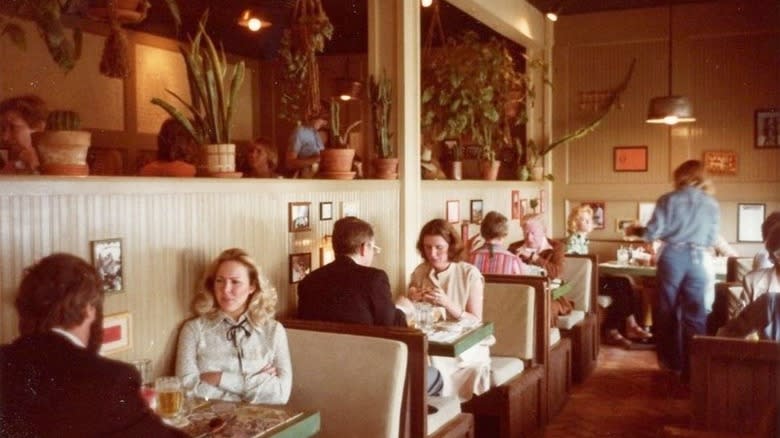
As a new concept in dining, Chili's cast a wide net to lure in all kinds of customers. Lavine candidly said, "I used to say our customers were anybody breathing. We got young and old, and it just fit everybody," adding, "we had wide appeal to everybody from high school kids [on] up."
One time, a customer even showed up on horseback, riding in from a nearby farm — something the other patrons who drove probably appreciated, as there were only 35 parking spots at this busy restaurant. While he didn't arrive on a horse, another memorable customer was a modern bandit of sorts. This would-be thief waited in line for a table, and only after being seated, asked for the manager and informed him it was a stick-up.
While casual was the spirit of Chili's, Lavine wanted it to also work as a place to take a date. Turns out, it was a mission beyond accomplished. Today, Lavine even crosses paths with former customers who told them that their first date was there, leading to a long-lasting marriage.
The Original Chili's Menu Was Only A Single Page
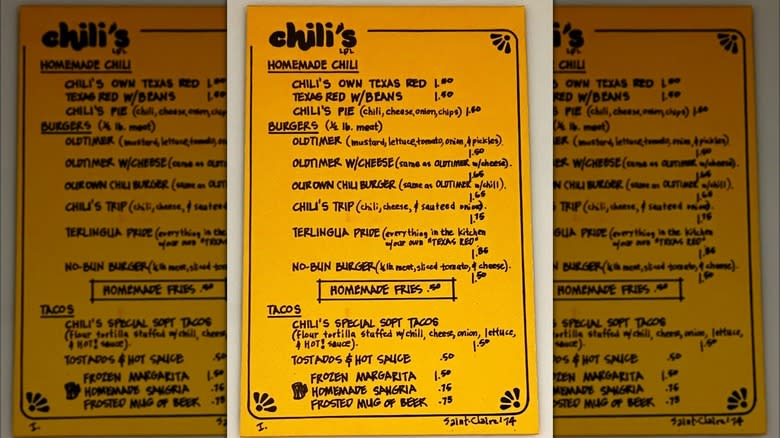
The original Chili's menu, also hand-written by Grant Saint-Claire, was a much simpler affair than today's. It was a single yellow page offering only limited fare, served in baskets and headlined by its own Texas red chili, made with just chili powder, cumin, and onion. At some point, the restaurant was making 40 gallons of chili per day. A lot of non-chili eaters still got a taste of it in the tacos, as the lettuce and cheese helped to mellow out the spice. The chili also topped hot dogs and burgers, which were uncommonly large at the time at a ½ pound. One burger on the menu remains a staple to this day — the Oldtimer. Lavine explained, "Our meat vendor supplied steaks to a chain called Steak and Ale. And so when they cut steaks, they had steak trimming left and that went in our hamburgers. And that's what made him have a special taste." Notably, Steak and Ale was founded by Norman Brinker who, in 1983, acquired Chili's and turned the budding franchise into the massive chain it is today.
When it came to French fries, Chili's wanted to replicate the ones served by Mac's Bar-B-Que. After failing to figure it out on their own, Mac's owner Billy McDonald actually showed them how to do it. In 1977, Dallas Magazine described Chili's homemade version as being "long, thin, greasy French fries with the skin still on them."
Fajitas Proved To Be Sizzle That Sells
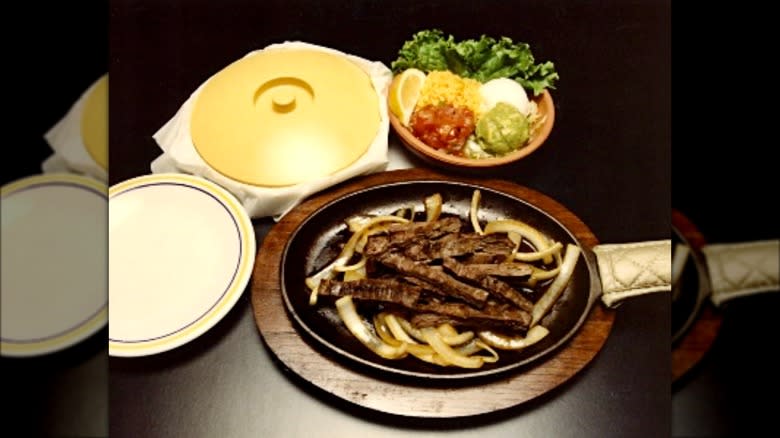
Fajitas' origins are embedded in Tex-Mex cuisine, dating back to 1930s vaquero cattle ranchers. The name first started to be used in 1971, pioneered by "Fajita King" Juan Antonio "Sonny" Falcón. "Mama" Ninfa Laurenzo served up her version of the dish, tacos al carbon, at her namesake Houston eatery in the '70s. Chili's chose Houston as the outpost for its second location, which opened in 1976. On frequent trips to Houston, Lavine gobbled up Ninfa's tacos al carbon. While interested in learning how to make them, though, Chili's had no intention of adding them to the menu.
Another fajita trailblazer was executive chef of La Vista at Austin's Hyatt Regency hotel George Weidmann. That restaurant opened in 1982, and soon popularized the sizzling version of fajitas which, it turns out, is merely a disappointing falsehood based on a sound trick.
By 1984, Chili's had finally added the hot product to the menu, and even used its launch as the subject of its first-ever TV promotion. Since the dish was uncommon with diners at the time, Chili's created a menu card explaining how to actually eat them. The chain helped to expand the dish's awareness beyond Texas, and forced itself to start serving some food on plates instead of baskets. Today, fajitas remain a large seller for Chili's. Chief Marketing Officer George Felix said, "You see a sizzling skillet of fajitas go by in the restaurant, and everybody's head turns."
Changing Texas Liquor Laws Cemented The Margarita As Chili's Signature Drink
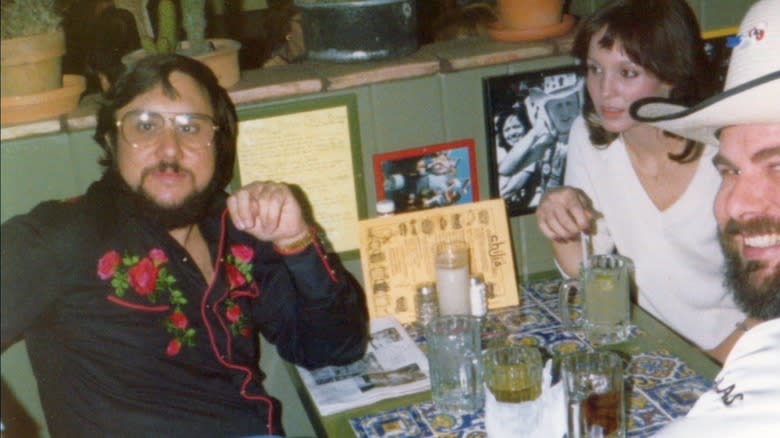
Texas used to have very strict liquor laws, especially concerning eating out. As Lavine recalled, "if you wanted to drink in a restaurant, you'd have to have a private club card. And if you went to 15 restaurants, you had to have 15 cards." In 1971, that all changed when the state legalized the sale of hard liquor by the drink in bars.
Restaurants like Chili's quickly took advantage of the new looser liquor law, and Lavine and company had to figure out the right pairing for its food. He explained, "So we want to sell you a hamburger and a drink, and we thought nobody's gonna buy a scotch and water for the hamburger. The only chance in Texas was a margarita. So that's why we picked margaritas." The menu included both frozen and homemade margs, as well as frosted mugs of beer. They've continued to be in Chili's customers' hands ever since.
A Jingle About Baby Back Ribs Kicked Off Chili' Pop Culture Contributions
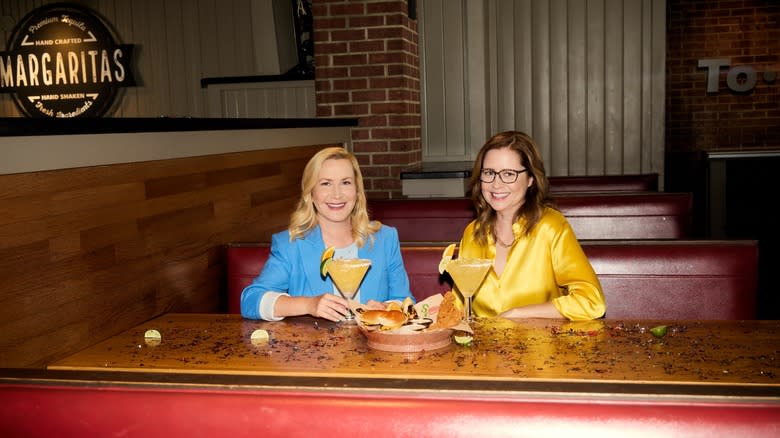
Chili's place in pop culture truly got rolling when the company pushed for a jingle, when it wasn't exactly popular anymore, to sell baby back ribs. Guy Bommarito of Agency GSD&M whipped up the infamous soulful "I want my baby back" jingle we all know and love/loathe in 5 minutes — even though, in a twist of irony, Bommarito has never even eaten Chili's baby back ribs. The song later made a cameo in "Austin Powers: The Spy Who Shagged Me" and TV show "The Office," as well as earning commissioned cover versions by NSYNC and Boyz II Men. Chili's isn't remotely done with the jingle, as Jesse Johnson, Vice President of Marketing wants more artists to sing it, saying, "the dream is that in ten years we have an amazing Spotify list."
In the same episode of "The Office," secretary Pam Beesly has one too many margaritas, which got her character banned from the chain. In 2017, actor Jenna Fischer tweeted a picture of her outside of a Chili's, pondering whether she should dare enter or not. This prompted Chili's to officially lift the ban on Pam Beesly, and six years later, Fischer and "Office"-mate Angela Kinsey starred in a "it all starts with a marg" ad campaign. Other famous folks and personalities who have lent their talents to Chili's include R&B singer Brian McKnight, race car driver Corey LaJoie, and "Vanderpump Rule's" Scheana Shay and Katie Maloney.
The Last Meal At The Original Chili's Was Served On Halloween
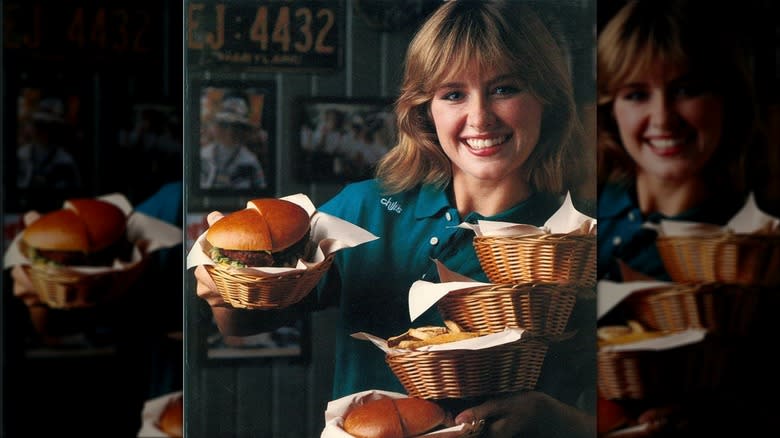
Sadly, nothing lasts forever. The original Chili's location expanded in its early years, and with the area seeing an increase in traffic, the adjacent streets had to be widened. According to Texas Monthly, Chili's kitchen stood in the way of Greenville Avenue's expansion, and so in 1981, a new Chili's building was erected next door.
Chili's would remain a fixture at the corner of Greenville and Meadow, until Halloween of 2007, when it abruptly served its final lunch. In a statement to Fox 4 News Dallas-Fort Worth, Brinker International said, "We are very grateful to our loyal guests who have visited this location over the years, and the support which helped launch the Chili's brand." The building then lay vacant, and five years later, it was torn down and replaced by another Dallas-born icon, 7-Eleven, now also thriving thanks to relaxed booze laws. Many items from Chili's original location, including signage, uniforms, and even coasters have found a safe final resting place at parent company Brinker International's headquarters in Dallas.
While Lavine left Chili's in 1984, the founder believes the chain carries on the spirit of the original. He said, "they work very hard at making it fun. I think that's very important in any business." In case you're curious, he does still eat there from time to time. And what does he order? A chili burger, naturally.
Read the original article on The Daily Meal


